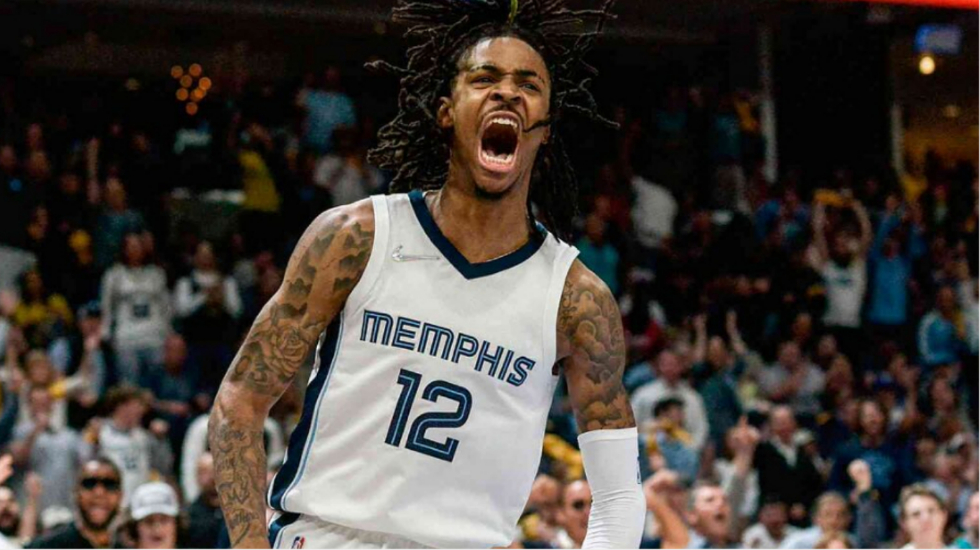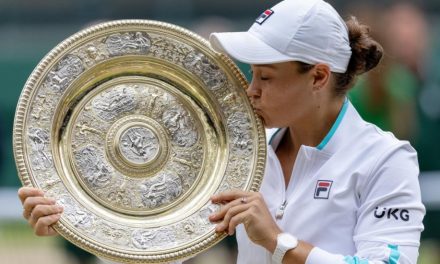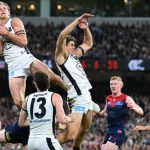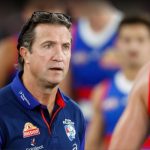Memphis youngster Ja Morant has quickly become one of the most electrifying players in the NBA. Photo: AP.
After a surprising playoff berth in 2021, the question around the 2022 iteration of the Memphis Grizzlies was whether they would be able to find another level, or would they take a step back as the league took the young Grizz more seriously?
Memphis answered that question emphatically. On the back of a brilliant second half of the regular season, the Grizzlies finished second in the West with a franchise-best 56 wins, before falling to the eventual champion Warriors in the second round of the playoffs.
The Grizz are young, talented, deep and hungry. There’s always room for improvement, though. Let’s take a look at how their off-season might pan out.
The roster
Memphis general manager Zach Kleiman is quietly establishing himself as one of the best in the business.
He’s built a young roster – the NBA’s third youngest – that is full of talent. Importantly that talent is complementary of each other both positionally and in skillset.
He’s hired an excellent young coach in the hirsute Taylor Jenkins and holds a number of future draft picks to continue to stock up on young talent – or consolidate into another star.
Importantly for a smaller market team, he’s done all of this despite inheriting a team that had some pressing cap concerns.
Ja Morant is obviously the main man in Memphis. The 23-year-old exploded in year three, providing 27.4 points (49/35/76 shooting splits), 6.7 assists, 5.7 boards, 1.2 steals and approximately 25 highlight reel plays a night.
The video below is 12 minutes long and it’s well worth your time. Ja is just that much fun to watch.
Jaren Jackson Jr returned from a knee injury to establish himself as one of the best interior defenders in the NBA, leading the league with 2.3 blocks per game. He still fouls too much, though he’s improved dramatically in that area, as well, at 4.6 fouls per 36 minutes, down from a frankly ridiculous 5.9 last season.
He could stand to improve his rebounding rate, though his predilection for playing an outside role on offence as well as sharing the court with dreadnought centres (Steven Adams this season, Jonas Valanciunas in seasons prior) surely holds him back a little.
Around those two, Memphis’ depth is enviable: Tyus Jones, Desmond Bane, Dillon Brooks, Adams, Kyle Anderson, Zaire Williams, De’Anthony Melton, John Konchar, Brandon Clarke.
Even their end-of-bench guys in Killian Tillie and Santi Aldama are good players.
That’s 11 players that could be playing rotation minutes for plenty of teams next season, and not one older than 28.
Don’t be surprised if the Grizz consolidate a few of those players for either a bigger name or future draft capital, especially as some of the younger players start to get more expensive.
Team needs
Well … not much, to be honest.
Memphis came in at the very top of ESPN’s Futures rankings for a reason.
If there is anything it needs, it’s some improved health for its players.
Morant missed 25 games this season, after missing 34 in his opening two campaigns, mainly because he plays the game in a way that is borderline reckless and, whilst that fearlessness is imperative to his effectiveness, there is surely a happy medium where Morant can continue to attack without missing large chunks of each season.
Brooks, who averaged a career-high 18.4 points, only played 32 games. His rookie season aside, he’s missed time every year.
Clarke has suffered injuries in all three of his NBA seasons and Xavier Tillman has missed time in both of his pro seasons.
That depth takes on a new importance when those injuries are taken into consideration.
The team also has free agents and players on expiring deals to make decisions on, which is a lovely segue.
PLEASE HELP US CONTINUE TO THRIVE BY BECOMING AN OFFICIAL FOOTYOLOGY PATRON. JUST CLICK THIS LINK.
The cap sheet
As things stand, the Grizz have $101 million allocated to 13 players, though that includes team options to Ja and Clarke (likely to be extended long term), Bane (will be picked up) and Jarrett Culver (unlikely to be picked up).
On the surface, that looks almost unfairly positive, but this roster is about to become rather expensive.
Luckily for Memphis, its owner Robert Pera has seen his net worth explode in recent years, meaning it can act like a big market team in building its team.
Morant is a mortal lock to sign a max deal on July 1. At this stage he will earn $186 million over five years, though an All-NBA berth in 2023 will trigger a supermax contract of $222 million.
Clarke will likely receive an extension as well, though obviously he won’t earn Ja money. Look for something in the realm of $12-15 million to be on offer.
Important rotation pieces in Jones and Anderson are unrestricted free agents.
Anderson could become a victim of the Grizzlies’ heralded depth, proving a luxury item that the team doesn’t need. Jones, on the other hand, is very much required.
One of the best back-up point guards in the NBA, Jones is a sharpshooter who treats the ball with the utmost respect (7.3:1 assist to turnover ratio).
His traditional leanings when playing the point are a nice contrast to Morant, allowing him to play alongside the star man as well as spelling him.
Importantly, Jones is always available, vital when Morant is a continual injury risk, and plenty of teams will be wanting to see if he can step in as a starter or a high-minutes reserve.
Memphis will have to go above the mid-level exception to keep him. Look for a three- or four-year deal (possibly a player option in the final year) at $13-15 million.
The team also has to make decisions on a number of expiring contracts.
Memphis fans hold a love/hate relationship with Brooks. The combustible Canadian is a match winner, but can also shoot the Grizz out of a game from time to time.
He’s fearless both with the ball and defending the opponents’ best wings and will be retained at something close to $20 million per year.
Adams’ status is fascinating. He’s a monster of a man who takes so much of the physical punishment that allows Jackson and Clarke to thrive.
He’s still valuable, though has clearly regressed from his best days in Oklahoma City. With Jackson, Clarke, Tillman and potentially Tillie on board, Adams could be moved on.
For what it’s worth, Tillie will probably be retained as a cheap depth piece, capable of stretching the floor whilst providing decent rim protection.
The draft
Memphis holds its own pick (29) as well as Utah’s 22nd overall pick in the first round of this year’s draft.
The direction the Grizzlies take in the draft may well indicate how they approach the rest of the off-season.
If they take point guards, is that an acceptance that Jones won’t be returning? Is a wing player an indication that Anderson won’t be retained? Could it be a precursor to Brooks being traded? Is a big man a clue that Adams – and maybe Clarke or Tillman – could be on the move?
The fact that Memphis has so much young depth means that it can simply draft for talent with its picks and make its roster decisions later on.
That, of course, makes predicting who the Grizzlies will select exceedingly difficult. But we’ll give it a go anyway, eh?
At 22, this writer is going to go for either Jalen Williams or MarShon Beauchamp.
Both are athletic wings who project as fine complementary players, capable of hitting open shots and secondary playmaking.
Defensively they’re both stout, with good footwork and long arms – Williams in particular – who should prove disruptive, if not quite lockdown defenders.
At pick 29 the Grizz will likely go with a project big like John Butler or Ismael Kamagate, though keep an eye on Patrick Baldwin. The 6’10” forward shoots at an NBA level right now, though lacks anything close to elite athleticism.
He’s a clever, cerebral player who might be able to play sooner rather than later as a genuine stretch four. Imagine he and Jackson Jr spreading the floor, drawing away rim protectors – the havoc Ja would create …
To find more of Jarrod Prosser’s content visit vendettasportsmedia.com











